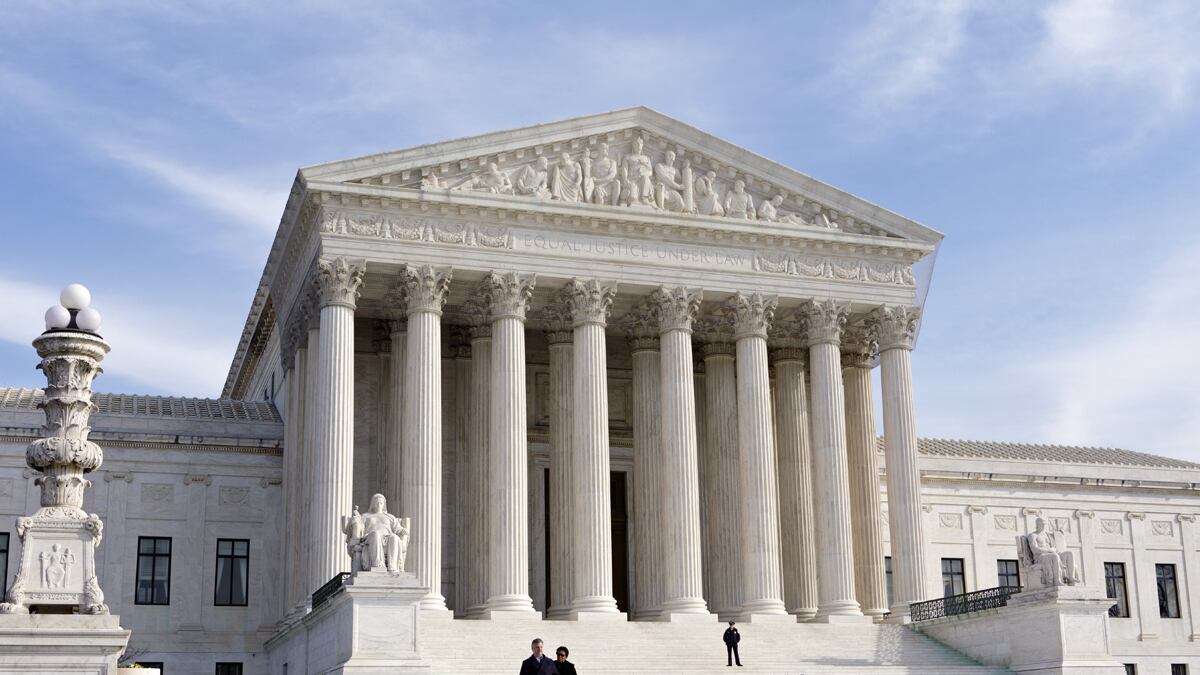When the Supreme Court announced this week that it would hear a case involving race-conscious admissions at the University of Texas, many in the legal community suspected it was high noon for affirmative action in American higher education.
It appeared that the court’s newly emboldened conservative bloc was set to take a whack at a landmark 2003 case, Grutter v. Bollinger, in which a slightly less conservative court had ruled that race could be considered as a factor in admissions at public universities.
At that time, Justice Sandra Day O’Connor, who wrote for the majority in Grutter, noted that minority applicants with high grades and test scores had increased in the previous several decades. “We expect that 25 years from now," she wrote, "the use of racial preferences will no longer be necessary to further the interest approved today.”
Some saw that view as the end of the matter for the time being, until last Tuesday, when the court agreed to hear a case brought by Abigail Noel Fisher, who claims the University of Texas denied her admission because she is white.
The court’s decision to take the case raised red flags throughout the legal blogosphere, in part because it’s 2012, not 2028. (Apparently, Justice O’Connor’s timeframe was not a concern to the current justices.) But affirmative-action supporters were also alarmed because Fisher v. University of Texas is beset by procedural roadblocks that led many legal observers to predict it might never get a hearing at the high court.
“The major role of the court is to settle conflicts among the lower courts,” said Scott Gant, a litigator at Boies, Schiller & Flexner who also teaches constitutional law at Georgetown. “But here it’s not clear there’s a split in the lower courts. The fact that they took it anyway strongly suggests they want to revisit their precedent in Grutter.”

For starters, Fisher—who brought the suit in 2008—is set to graduate from Louisiana State University in May. By the time the court hears oral arguments in the fall, she will no longer be able to apply to UT as an undergraduate, and could therefore lack the personal stake required to keep her case alive. If so, her only remaining demand would be for a refund of the $50 application fee and $50 housing deposit she paid. UT claims it could simply refund Fisher the $100 and make the case moot—a position some legal experts believe could hold water.
In other words, the court’s taking on of Fisher suggests that the justices are so impatient to roll back affirmative action that they don’t care what the case looks like.
The winds of change at One First Street would seem to support this notion. Since Grutter was decided, the court has experienced nearly 50 percent turnover, and the new justices are either roughly the same as or more conservative than their predecessors.
But the court’s magic number is, as ever, five: that’s how many justices you need to win.
Chief Justice John Roberts, along with Justices Antonin Scalia and Clarence Thomas, are well-known opponents of affirmative action. Justice Samuel Alito, who replaced Justice O’Connor in 2006, has voted with the conservative bloc in decisions hostile to racial classification. And Justice Anthony Kennedy, the court’s perennial swing vote, has never voted to uphold an affirmative-action program.
There’s your five.
So is a decision prohibiting the use of race in admissions imminent? Far from it, court watchers say.
For one thing, the Texas-specific nature of Fisher gives the case a narrow scope. Texas is one of three states with a so-called percentage-plan admissions system. In Texas, the “Top 10-Percent Law” means that the top 10 percent of graduates from every high school in the state are automatically admitted to the public university system. The 10 percent rule is technically race-neutral, but in fact it increases racial diversity in universities because many Texas high schools are overwhelmingly white or black. Fisher argues that, since Texas already has the 10 percent rule, the affirmative-action program at UT—which also uses race as a factor in the admissions process—is more than what Grutter permits.
Assuming Fisher wins, the court could take two possible tacks that would fall short of overruling Grutter. It could agree with Fisher and hold that the 10 percent rule generates sufficient diversity, and that taking race into account goes beyond what’s sanctioned under Grutter. Such a decision, however, would affect only the affirmative-action program in Texas. The other two states with similar percentage-plan systems—Florida and California—prohibit race-conscious admissions.
A stronger move would be to apply Grutter, but to make it a more exacting standard than what lower courts have tended to use when reviewing admissions plans that factor in race. If Grutter is given more teeth, many affirmative-action programs around the country could flunk constitutional scrutiny. Should the court wish to adopt a new standard, it will have many to choose from in the dozens or hundreds of friend-of-the-court briefs likely to be submitted by interested parties. A new standard could, for example, further limit the permissible ways in which race can be taken into account.
For those justices intent on inching toward 2028 sooner rather than later, the narrow scope of Fisher could be its virtue. “You could definitely envision them moving incrementally on this,” says Lauren Rosenblum Goldman, an appellate litigator at law firm Mayer Brown. “The thinking might be: we can get [Justice] Kennedy now for the proposition that Texas must limit itself to the 10 percent rule, and then on the next case we’ll attack the 10 percent rule.”






